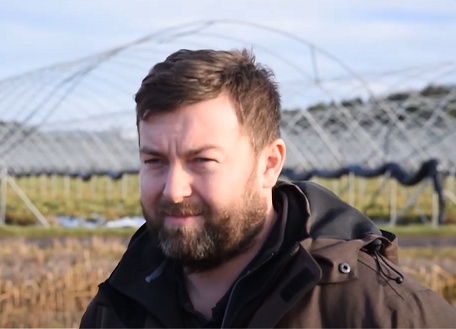Soil Regenerative Agriculture Group Case Study: Ross Mitchell, Castleton Farm
30 March 2024Ross Mitchell runs Castleton Farm in partnership with his father Murray. The business covers over 600 ha, specialising in strawberries, raspberries, cherries and blueberries, supplying Marks & Spencers. Ross and Murray have some root crops and daffodils, although the land is predominantly managed for soft fruit production under polytunnels.
Alleviating soil compaction
Soil compaction is an issue and one Ross and his team would like to reduce or eliminate. In 2018 Ross moved to no-tillage and is giving this a try. If successful, this could help to make the farm more resilient and help to reduce the risk of compaction whilst also improving farm soils.
Ross has been looking at various methods of establishing green cover crops in autumn 2019.
Using a mix of mustard, raddish, vetch and rye, Ross tried three different methods of establishment.
- Method one was to establish the crop using the direct drill to drill the green cover mix straight into the stubble after harvesting spring barley.
- Method two was to broadcast the green cover crop onto the stubble, followed with a straw rake. (Same day as method one)
- Method three was to broadcast the green cover crop into the standing spring barley crop two weeks before harvest.
In all three trials the straw from the previous crop was chopped and the green cover crops received 25 kgs/ha of Nitrogen to aid the breakdown of the straw and establishment of the green cover crops. A dressing of slug pellets was also made to all three trials.
Photos of the plots taken at the start of November are shown below:

As can be seen from the pictures this year, which has been a wet autumn, has shown that the broadcast cover crops have established much better than the drilled cover crops.
In addition getting the cover crop established a fortnight before harvest allows for at least a fortnights additional growth (probably three weeks by the time you can get the cover crop sown after harvest) at a very growthy time of year in August.
Sign up to the FAS newsletter
Receive updates on news, events and publications from Scotland’s Farm Advisory Service

